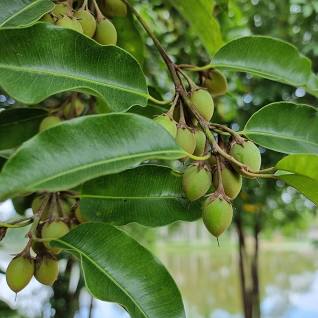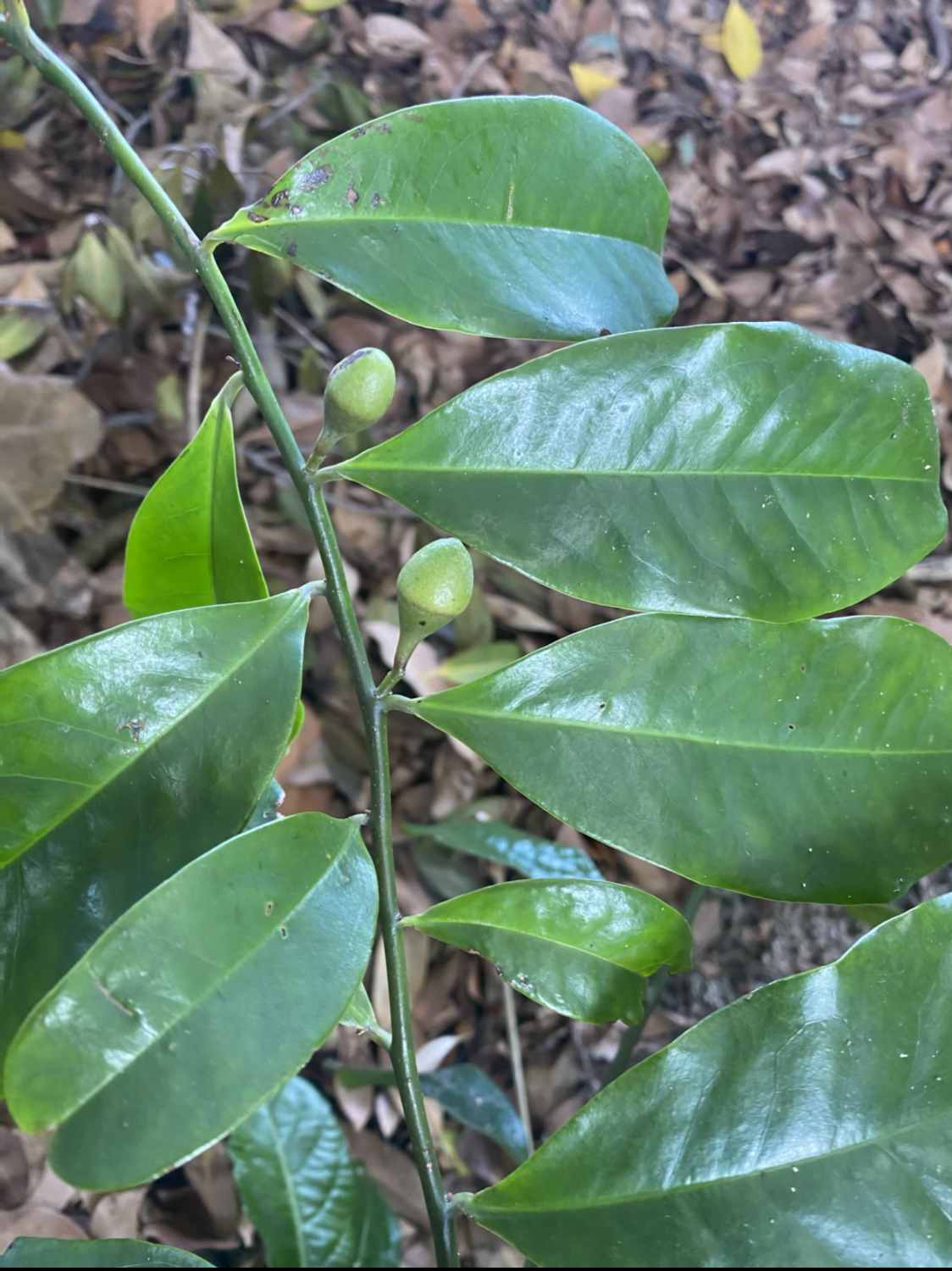
Eupomatia laurina
Common name: – Native Guava
I grow best: Full sun/part shade
· Height 12 metres
· Perfumed flowers
· Bird & butterfly attracting
· Edible sweet spice fruit
· Cultural uses
Looks like: A spreading large shrub to small tree with large glossy green leaves and interesting cream flowers in spring and summer. The flowers have a sweet and fruity perfume, and are followed by edible fruit with a creamy pulp and many seeds like a guava. They are ripe when they are soft to squeeze, and can be eaten raw or made into jam and jellies. The fruit can also be dried and crushed to use as a flavouring. A shrub or small tree to 12 m high with brown scaly bark. Young branchlets and inflorescences covered with pale hairs. Leaves 5–25 cm long, 2.5–6.5 cm wide with upper surface hairless and glossy, and paler lower surface. Leaves have conspicuous lateral veins and numerous oil glands. Petiole 15–20 mm long. Flowers clustered and on a long stalk (10–25 mm long). Petals 7–10 mm long, white or pink. Berry 15–25 mm long, 10–15 mm wide, yellow and fleshy.
Habitat & Distribution: It is a tropical to subtropical rainforest plant, but can easily be grown in any frost free area. It grows to around 3-8 metres tall, but some specimens can be larger still. It responds well to pruning if you wish to keep it to a smaller size, and can also be grown in a large tub or container which will also limit how tall it will grow. It can have more than one trunk, and the handsome glossy foliage will have red-bronze colouring in cooler weather. Grow in sun or shade, and does well in most soils. Mulch well to keep the soil moist and to deter weeds.
Occurs from Broken Bay, approximately 90 km north of Sydney, New South Wales, to Maryborough in Queensland. Populations are typically restricted to coastal and sub-coastal areas of low elevation however the species does occur up to c. 120 km inland in the Hunter and Clarence River catchments and along the Border Ranges in NSW.
| Family | Eupomatiaceae |
| Plant Type | Small tree, Large shrub |
| Width | 5 |
| Flowering Time | Spring, Summer |
| Soil Type | Sandy, Clay, Loamy, Sandy loam, Clay loam |
| Climate Zone | Sub-tropical, Warm temperate |
| Growth Habit | Evergreen, Dense foliage, Spreading |
| Soil Moisture | Well-drained, Moist moderate drainage |
| Special Uses | Edible, Street tree, Playground friendly |
| Height | 8 |
| Flower Color | Cream |
| pH Level | Acid, Neutral |
| Plant Environment | Low maintenance garden, Container growing |
| Light | Sunny, Light shade, Half shade |
| Frost Tolerance | Tolerates light frost |
| Attracts Wildlife | Seed eating birds, Butterflies, Mammals |
Distribution:

Traditional uses: The flowers have a sweet and fruity perfume, and are followed by edible fruit with a creamy pulp and many seeds like a guava. They are ripe when they are soft to squeeze, and can be eaten raw or made into jam and jellies. The fruit can also be dried and crushed to use as a flavouring. The bark was used for making fishing lines.

